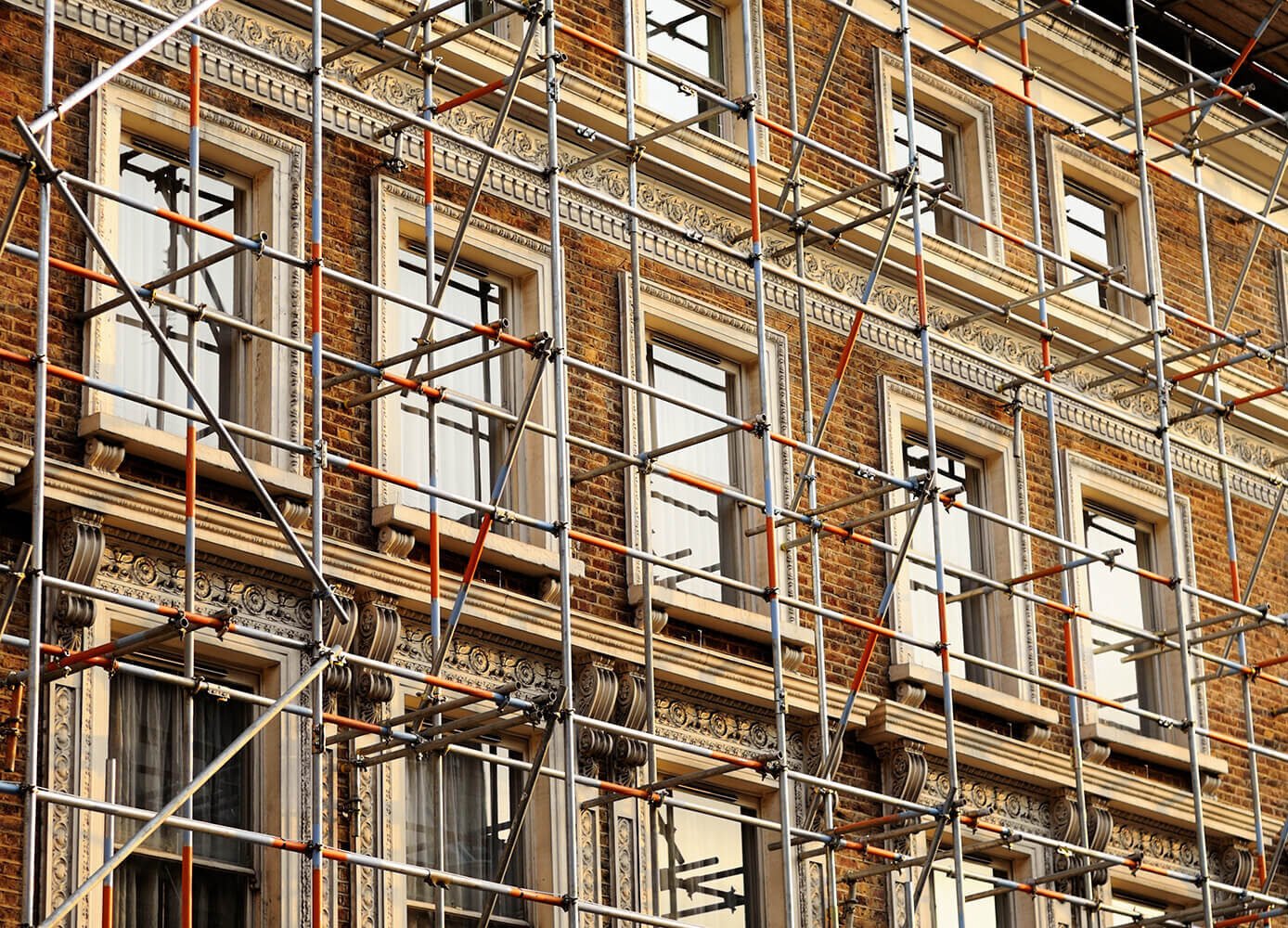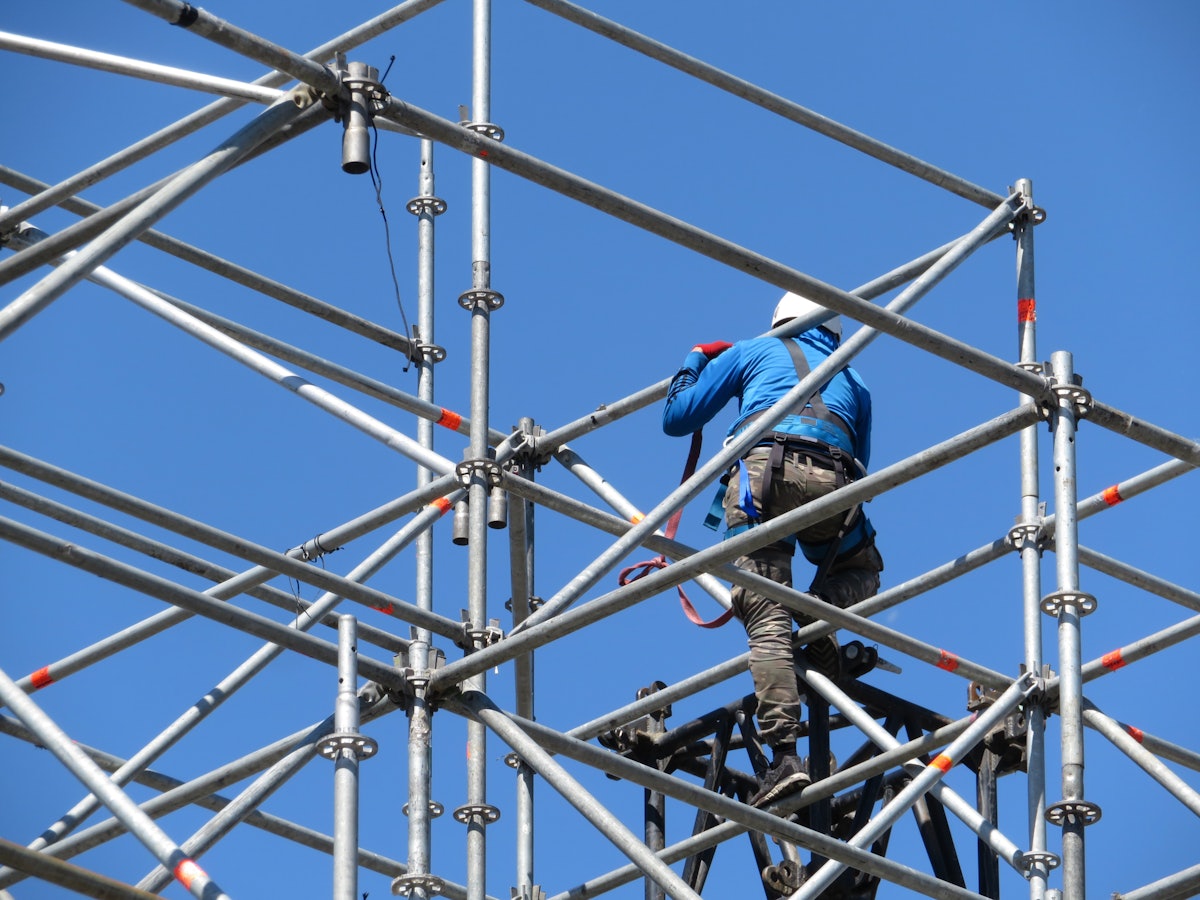Affordable Domestic Scaffolding for Every Home Renovation Project
Affordable Domestic Scaffolding for Every Home Renovation Project
Blog Article
Exploring the Numerous Kinds of Scaffolding Used in Construction Tasks
The construction market depends greatly on numerous kinds of scaffolding to fulfill specific task needs, each offering distinctive advantages and applications. Conventional framework scaffolding supplies a tough structure for basic jobs, while suspended scaffolding is important for work on high-rise structures.

Traditional Frame Scaffolding
Typical framework scaffolding is among one of the most commonly utilized approaches in the building industry as a result of its toughness and versatility. This system contains vertical and straight frameworks that are assembled to develop a stable system for workers and products. The main parts include vertical posts, horizontal journals, and diagonal dental braces, which together offer a strong structure that can sustain significant tons.
One of the vital benefits of traditional framework scaffolding is its versatility to numerous building and construction projects, ranging from domestic buildings to big business frameworks. The modular layout permits very easy setting up and disassembly, making it efficient for both short-term and long-term projects. In addition, the system can be customized in height and size, accommodating different building designs and website conditions.
Safety and security is critical in scaffolding applications, and conventional framework systems are furnished with guardrails and toe boards to stop drops and make sure employee security. Moreover, routine evaluations and adherence to security policies are essential in maintaining the integrity of the scaffold. In general, conventional frame scaffolding continues to be a basic option in the construction sector, providing a dependable system for labor and boosting general project performance

Suspended Scaffolding
Suspended scaffolding supplies a distinct remedy for construction jobs that require accessibility to elevated surface areas, specifically in situations where standard frame scaffolding may be not practical. This sort of scaffolding is usually put on hold from the roof or upper degrees of a framework, using a system of pulleys, platforms, and ropes to create a working area that can be readjusted to numerous heights.
One of the primary advantages of suspended scaffolding is its versatility. It can be conveniently rearranged or decreased to suit changes in construction requirements, making it suitable for jobs such as window installment, frontage job, and upkeep on skyscraper buildings. Furthermore, the very little impact of suspended scaffolding permits much better use ground area in metropolitan atmospheres, where area is typically restricted.
Safety and security is a vital consideration in the usage of suspended scaffolding. In general, suspended scaffolding provides a efficient and efficient remedy for accessing hard-to-reach locations in various construction circumstances, improving both efficiency and security on site.
System Scaffolding
System scaffolding, frequently considered as a contemporary service in the scaffolding sector, consists of pre-engineered parts that can be rapidly assembled and adjusted for various building projects. Scaffolding. This type of scaffolding is identified by its modular style, which enables flexibility and efficiency on work sites, suiting architectural needs and different elevations
Typically made from high-strength steel or light my response weight aluminum, system scaffolding supplies enhanced longevity and stability. The elements consist of vertical messages, straight read what he said ledgers, and diagonal dental braces, which interconnect safely, making certain a robust framework. The layout frequently includes standard fittings, simplifying assembly and disassembly procedures, therefore decreasing labor time and expenses.

Rolling Scaffolding
Rolling scaffolding is a functional option to conventional set scaffolding, created for movement and convenience of use on construction websites. This kind of scaffolding includes a platform sustained by frames with wheels, permitting workers to conveniently move it as required. The movement attribute substantially enhances performance, as it minimizes downtime connected with dismantling and setting up dealt with scaffolding.
Commonly constructed from light-weight materials such as aluminum or steel, rolling scaffolding offers a strong yet mobile solution for jobs calling for frequent repositioning - Scaffolding. It is especially advantageous in tasks such as paint, drywall installment, and electrical work, where accessibility to various heights and places is essential
Safety is vital in rolling scaffolding layout, with features such as locking wheels to avoid unintended movement when being used, and guardrails to shield employees from drops. In addition, numerous designs are flexible in elevation, suiting numerous project needs.
Cantilever Scaffolding

The design of cantilever scaffolding usually entails utilizing brackets or arms anchored to a structure or framework, enabling the platform to expand exterior safely. Security is vital; therefore, these scaffolds have to be crafted to withstand numerous loads and ecological problems. Normal assessment and upkeep are essential to make certain structural honesty and worker security.
Cantilever scaffolding is preferred for its flexibility and efficient use room, making it a preferred selection in urban settings where space restraints prevail. Moreover, it promotes much easier accessibility to high altitudes, eventually adding to the overall performance of construction projects. Similar to all scaffolding types, correct training and adherence to security requirements are essential for employees making use of cantilever scaffolding.
Conclusion
Typical framework scaffolding supplies stability, while put on hold scaffolding offers adaptability for raised tasks. System scaffolding facilitates fast assembly, and rolling scaffolding improves movement for differing work atmospheres.
Standard structure scaffolding provides a tough structure for basic jobs, while suspended scaffolding is essential for work on high-rise structures.Rolling scaffolding is a flexible choice to standard set scaffolding, designed for wheelchair and simplicity of usage on building websites. As with all scaffolding types, appropriate training and adherence to safety and security next page standards are essential for employees utilizing cantilever scaffolding.
Traditional frame scaffolding gives stability, while put on hold scaffolding supplies versatility for elevated jobs. System scaffolding facilitates fast setting up, and rolling scaffolding enhances movement for differing work settings.
Report this page